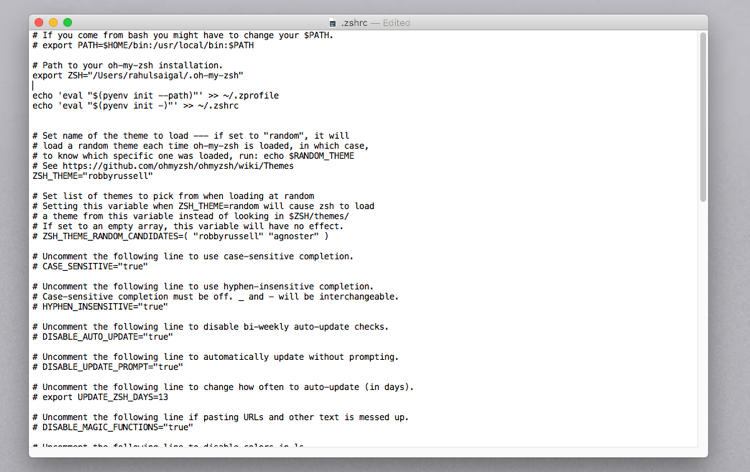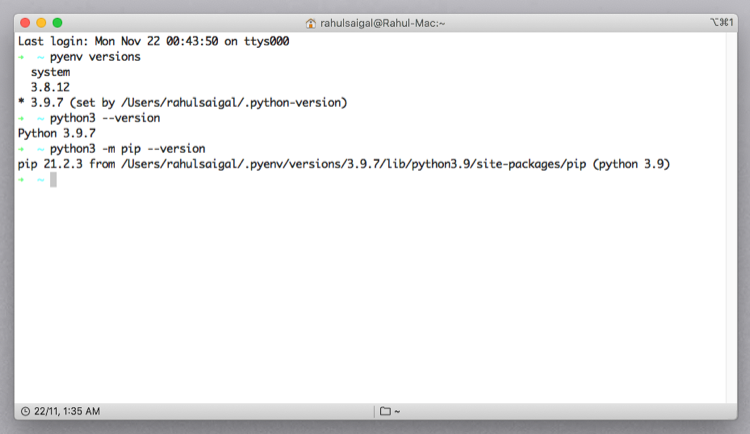If You Install Python Again Do You Lose All Your Packages
Just like whatsoever programming language, Python supports 3rd-political party libraries and frameworks that you can install to avoid reinventing the wheel with every new projection. If you lot want to utilise them, yous tin find these Python libraries on a key repository called the Python Package Index (PyPI).
It can exist a frustrating and time-consuming process to download, install, and manage these packages manually. This is why many developers rely on a tool called PIP for Python to make the entire process uncomplicated and fault-complimentary. We'll show y'all how to install PIP for Python in Windows, Mac, and Linux.
What Is PIP for Python?
PIP is an acronym that stands for "PIP Installs Packages" or "Preferred Installer Program." It's a parcel manager for Python that lets you lot manage PyPI packages not included with the standard Python distribution. PyPI hosts an extensive drove of frameworks, tools, and libraries for applications in finance, health, education, customer service, and more.
Is PIP Installed With Python?
If you're using Python two.7.9 (or greater), 3.4 (or greater), and so PIP is already built into the Python installer. While beginners will download the latest release from the Python website, you should remember that a item release isn't supported indefinitely, nor can libraries support it.
Every bit per the reports on the development release cycle, support for Python 3.4 already ended in March 2019, which means that it has bypassed the terminate-of-life co-operative, and you'll no longer get security fixes. So you'll end up dealing with more pregnant changes in both Python and in libraries at the aforementioned time, which makes upgrading scary.
Is Python Correctly Installed?
You have to make certain Python is properly installed on your organisation. At that place are different ways to install Python: through a parcel managing director or from the official website. While the installation is uncomplicated, beginner users may not be aware of the all-time practices for managing Python or make mistakes that can later cause issues.
Installing and Managing Python PIP for Windows
By default, the Python installer places its executables in the user's AppData directory, so that it doesn't need administrative permissions. Or, yous tin specify a higher-level target directory (C:\Python3.9) to make information technology easier to find. The installation directory will go added to the organisation PATH, so y'all don't have to configure anything.
If you're using Chocolatey to install software packages, make certain to avoid mixing Chocolatey installation with a regular package on the same machine. To check the version of the installed Python, press Win + X and open up Command Prompt.
Then, blazon in:
py --version To check the PIP version, type in:
py -1000 pip --version While PIP doesn't become updated often, it'south even so important to stay on summit of new versions for reasons like bugs, security fixes, and compatibility. To cheque for any upgrades, type in:
py -1000 pip install --upgrade pip If you get a "Python is not defined" message, then something has gone incorrect during the installation procedure.
Installing and Managing Python PIP for Mac
On transmission installation, a Python folder is created in the Applications binder and its framework in "/Library/Frameworks/Python.framework" which includes the Python executable and libraries. The installer adds this location to your trounce path "usr/local/bin." If you're a beginner who merely uses Python every and so oftentimes, then this setup works well.
If you're working on multiple Python projects, some at piece of work or for other side-projects, the location itself (needs sudo privileges) creates hurdles. Nosotros'll use Homebrew for installing software packages but not for Python development. The problem with using Homebrew Python is that it'south not in your control.
It can upgrade your Python, say 3.viii to 3.ix, without your intervention. Information technology can happen when other Homebrew-based packages (e.chiliad., youtube-dl) use Python as its dependency gets updated. You lose control over "site-packages" and all the PIP packages that you had installed might go inaccessible.
The Homebrew Python documentation knows almost this problem and recommends pyenv to manage Python environments. To make pyenv work, nosotros'll first install build dependencies through Homebrew. Open Concluding, then type in:
brew install openssl readline sqlite3 xz zlib We'll install pyenv
mash install pyenv At last, nosotros'll need to update the crush contour configuration, i.e, ~/ .zshrc if your default shell is ZSH. Add together the post-obit lines:
repeat 'eval "$(pyenv init --path)"' >> ~/.zprofile Quit Terminal and restart again.

If you want to see all the versions of Python that pyenv tin can install for you, type in:
pyenv install --list To install a specific Python version, blazon
pyenv install 3.9.vii It'll have a fleck of time for installation to go completed. Let's presume that a projection requires 3.8.12, a version that is not installed on the system. Permit'south install this version through pyenv
pyenv install three.eight.12 You can see what versions of Python you accept installed with
pyenv versions "organisation" version is the 1 that comes with Mac, i.e., Python two.7. Since it is deprecated, let'southward forget about information technology. Now tell pyenv the default version y'all desire to use.

You lot tin set Python versions at three levels: Global, Local, and Shell. Read the pyenv documentation for more details. Type in:
pyenv global three.9.7 The global level sets the Python version for all shells and directories. We'll cheque what happens when you check the current Python version.
python3 --version To cheque the PIP version, type in:
python3 -m pip --version And if yous wish to bank check for whatsoever updates to PIP, type in:
python3 -m pip install --upgrade pip The local level changes the Python version only for the electric current folders and subfolders. And then if a project requires Python 3.8.12, type in:
pyenv local 3.812 That'southward exactly what yous want for a project. You want to utilize a different Python version in this folder without changing the global one.
Installing and Managing Python PIP for Linux
Many Linux distributions come up packaged with Python, but it is possible that it may not be the latest version. To notice out which Python version you have, open the Last and type in:
python --version If yous have Python installed on your car, then ane of these commands should answer with a version number. If you want to install the Python distribution on Linux, the built-in package manager is probably the best method.
Advanced Package Tool
sudo apt install python3-pip Pacman Package Manager
sudo pacman -S python-pip Dandified Yum
sudo dnf install python3-pip python3-wheel Zypper Bundle Manager
sudo zypper install python3-pip python3-setuptools python3-bike Yum Package Manager
sudo yum install python3 python3-wheel Install and Configure Virtual Environment
In one case y'all have a base installation of a Python setup, don't start installing packages directly into it with PIP. That's considering every projection on your system will use "site-packages" to store and retrieve packages. At starting time glance, it may seem fine but imagine this situation. Let'due south say you lot're working on ii projects: A and B, both of which have a dependency on the same library C.
You lot'll start facing problems when y'all require a different version of library C. Maybe Project A requires version one, only Project B needs version 2. Since Python can't differentiate betwixt versions in the "site-packages" y'all need to create isolated environments for Python projects. Read our guide on how to set up and use a virtual environment.
Manage Python Packages With PIP
Once your PIP workflow is ready, you can outset installing packages from PyPI.
Install
Mac: python3 -1000 pip install "SomeProject"
Windows: py -k pip install "SomeProject"
Install a Specific Version
Mac: python3 -k pip install "SomeProject=ane.0"
Windows: py -chiliad pip install "SomeProject=1.0"
Upgrade
Mac: python3 -thousand pip install --upgrade "SomeProject"
Windows: py -m pip install --upgrade "SomeProject"
Uninstall
Mac: python3 -thou pip uninstall "SomeProject"
Windows: py -m pip uninstall "SomeProject"
List Installed Packages
Mac: python3 -chiliad pip listing
Windows: py -m pip list
List Outdated Packages
Mac: python3 -thou pip list --outdated
Windows: py -thousand pip list --outdated
Learn More than Virtually Python
Python is indeed a useful programming language with applications ranging from web development to data analysis. Although nosotros don't focus much on installation, it's important to fix up Python correctly so that your learning procedure is shine and error-free.
The all-time mode to learn Python is by building projects. Read our guide on scraping a website with the beautiful soup Python library.
About The Author
Source: https://www.makeuseof.com/tag/install-pip-for-python/

0 Response to "If You Install Python Again Do You Lose All Your Packages"
Post a Comment